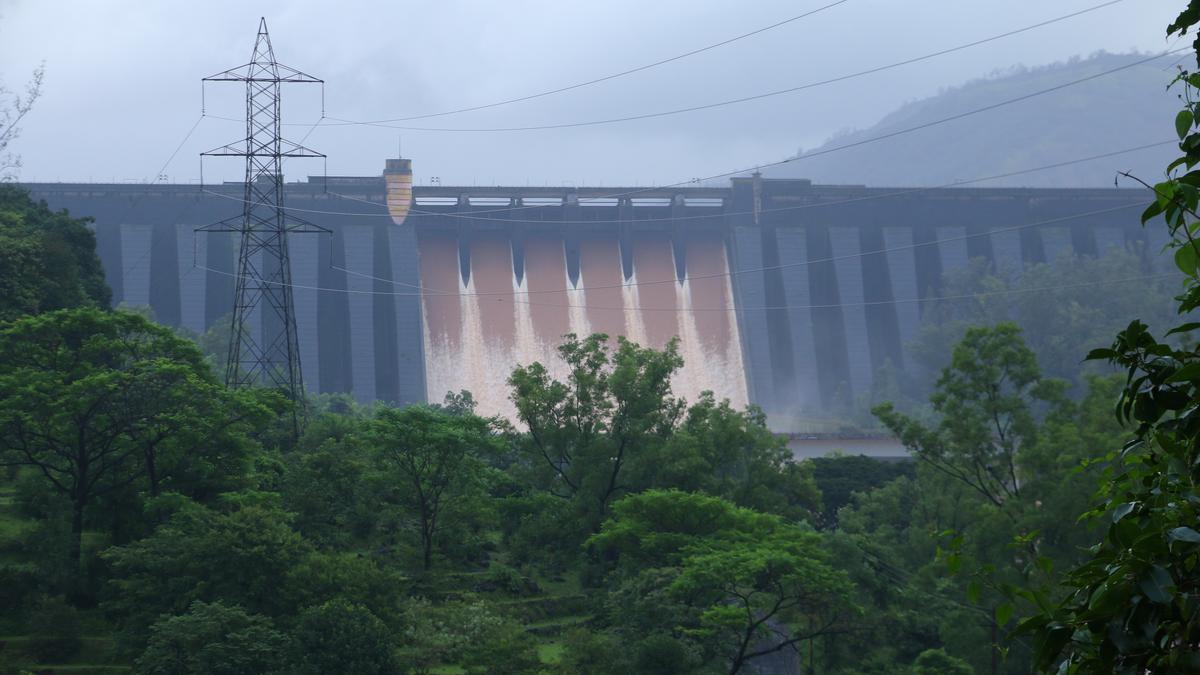Science
India’s Growing Water and Energy Demands Heighten Earthquake Risks

Concerns are rising in India regarding the potential for human-induced earthquakes, particularly as the country grapples with increasing demands for water and energy. A combination of excessive groundwater extraction and energy production methods appears to be contributing to seismic activity, which experts warn could pose significant risks to densely populated areas.
Understanding Human-Induced Seismicity
Earthquakes are typically natural occurrences, but human actions can also play a significant role. According to a study published in *Seismological Research Letters* in 2017, over 700 human-induced earthquakes have been documented globally in the last 150 years, with incidents becoming more frequent. Activities such as mining, groundwater extraction, and the construction of large dams can disrupt geological processes, leading to increased seismic activity.
In India, researchers are exploring the relationship between water levels, both above and below ground, and earthquake occurrence. A 2021 study in *Scientific Reports* identified a link between shallow earthquakes in the National Capital Region and excessive groundwater extraction for agriculture and consumption. “Between 2003 and 2012, when the water table significantly declined, there was a marked increase in seismic activity,” stated Bhaskar Kundu, an associate professor at NIT Rourkela and co-author of the study. The research indicated that seismic activity decreased after 2014 when the water table stabilized.
The Risks of Groundwater Extraction and Dams
When groundwater is removed, the pressure that maintains stability in the earth’s crust is lost, which can lead to surface jolts. C.P. Rajendran, a geoscientist and author of *The Rumbling Earth: The Story of Indian Earthquakes*, noted that while the earthquakes in the Delhi-NCR region are generally minor, they can reach magnitudes of up to 4.5. In a densely populated city like Delhi, which is situated on multiple fault lines and classified in the Zone 4 seismic risk category, even moderate quakes can have serious implications.
The risk of earthquakes linked to groundwater extraction is particularly pronounced across the Gangetic plains, where the water table has been rapidly declining. Dr. Rajendran highlighted the agricultural demands for water in the region, exacerbated by insufficient rainfall. He emphasized the need for scientific management of groundwater extraction and recharge, especially in areas experiencing rising seismic activity.
Historical events illustrate the potential for devastation from human-induced earthquakes. On December 11, 1967, a magnitude 6.3 earthquake in Koynanagar, Maharashtra, resulted in over 180 fatalities and extensive property damage, with subsequent studies attributing the disaster to water loading from the nearby Koyna hydroelectric dam.
Energy Production and Seismic Activity
India’s escalating energy demands further complicate the situation. Dr. Gahalaut, Chief Scientist at the National Geophysical Research Institute, remarked on the significant risks associated with energy extraction methods, including hydraulic fracturing, which involves injecting fluids into the ground to release oil and gas. Currently, 56 fracking sites operate across six states in India.
In Palghar district, Maharashtra, ongoing seismic events since 2018 have raised concerns among experts, who attribute the phenomena to isolated plate deformation. Initial assessments suggest that fluid migration due to rainfall may be a contributing factor. Dr. Kundu advocates for improved monitoring capabilities through robust seismic networks to accurately track and assess such activity across India.
Climate Change and Its Implications
Experts warn that climate change could indirectly influence earthquake frequency. The melting of glaciers due to global warming and alterations in rainfall patterns can affect surface water loading, potentially triggering seismic events. For instance, significant rainfall can shift the stress between tectonic plates, leading to earthquakes, as seen in the Sahyadri range of the Western Ghats, which has recorded tremors linked to heavy rainfall.
Dr. Rajendran pointed out that changing rainfall patterns not only affect soil chemistry and agricultural practices but also compel farmers to rely more on groundwater for irrigation, further increasing the risk of induced seismic activity. He noted that prolonged droughts can also activate dormant seismic faults, as demonstrated by a drought-induced earthquake in California in 2014.
While the precise relationship between human activities and seismic events remains complex, experts caution against oversimplifying the causes of earthquakes. Dr. Kundu remarked that current research cannot definitively quantify the extent to which human actions contribute to tectonic strain. Rather, these activities may accelerate or delay natural geological processes.
As India continues to expand its infrastructure and energy capabilities, the management of water resources and the understanding of their impacts on seismic activity will be crucial in mitigating the associated risks.
-

 World5 months ago
World5 months agoSBI Announces QIP Floor Price at ₹811.05 Per Share
-

 Lifestyle5 months ago
Lifestyle5 months agoCept Unveils ₹3.1 Crore Urban Mobility Plan for Sustainable Growth
-

 Science4 months ago
Science4 months agoNew Blood Group Discovered in South Indian Woman at Rotary Centre
-

 World5 months ago
World5 months agoTorrential Rains Cause Flash Flooding in New York and New Jersey
-

 Top Stories5 months ago
Top Stories5 months agoKonkani Cultural Organisation to Host Pearl Jubilee in Abu Dhabi
-

 Sports4 months ago
Sports4 months agoBroad Advocates for Bowling Change Ahead of Final Test Against India
-

 Science5 months ago
Science5 months agoNothing Headphone 1 Review: A Bold Contender in Audio Design
-

 Top Stories5 months ago
Top Stories5 months agoAir India Crash Investigation Highlights Boeing Fuel Switch Concerns
-

 Business5 months ago
Business5 months agoIndian Stock Market Rebounds: Sensex and Nifty Rise After Four-Day Decline
-

 Sports4 months ago
Sports4 months agoCristian Totti Retires at 19: Pressure of Fame Takes Toll
-

 Politics5 months ago
Politics5 months agoAbandoned Doberman Finds New Home After Journey to Prague
-

 Top Stories5 months ago
Top Stories5 months agoPatna Bank Manager Abhishek Varun Found Dead in Well









